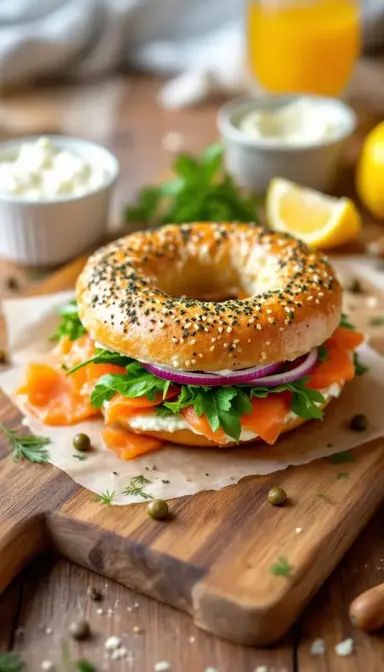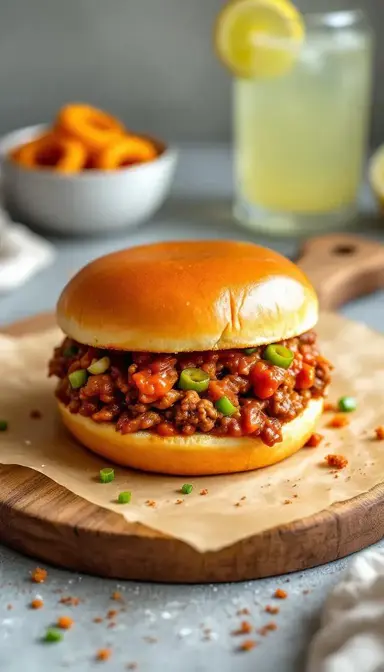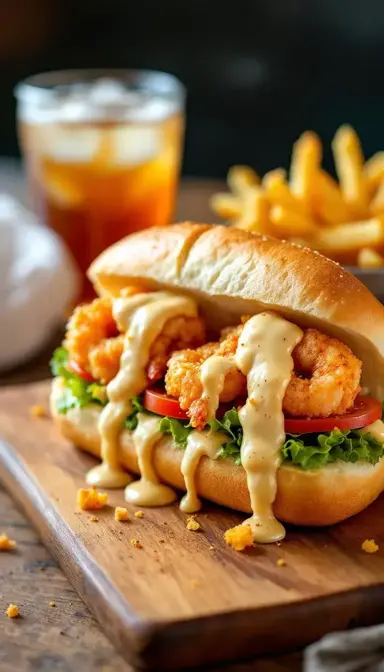There are certain foods that transport you back to simpler times with just one bite. For me, that’s the Fluffernutter sandwich—a glorious mess of peanut butter and marshmallow fluff sandwiched between pillowy soft white bread. It’s the kind of treat that makes you feel like a kid again, sticky fingers and all. Today, I’m sharing my foolproof method for crafting the perfect Fluffernutter, along with some kitchen secrets I’ve picked up over years of sweet, sweet experimentation.
Why This Recipe Works
Let’s be honest—this isn’t just a sandwich. It’s a time machine to summer vacations and lunchboxes, a no-fuss dessert that doubles as dinner when you’re feeling rebellious. Here’s why it’s earned a permanent spot in my recipe rotation:
- Instant gratification: From craving to first bite in under five minutes flat
- Nostalgia in every bite: That first taste will have you texting childhood friends immediately
- Endless possibilities: Like a blank canvas waiting for your creative touches
The Story Behind the Sauce
The Fluffernutter’s story begins in the early 1900s in New England, where marshmallow fluff first became a pantry staple. I like to imagine some clever kid—probably with a sweet tooth as big as mine—discovering that peanut butter and fluff were soulmates. The official name came later, in the 1960s, but the magic was there from the start.
Essential Ingredients & Tools
Ingredients for the Sandwich
- 2 slices fresh white bread (or whole wheat, brioche, or gluten-free)
- 2 tbsp creamy peanut butter (or crunchy for texture)
- 2 tbsp marshmallow fluff (like Jet-Puffed or homemade)
Optional Add-Ins
- ½ banana, sliced
- 1 tsp honey or maple syrup
- 1 tbsp chocolate chips or Nutella
Tools You’ll Need
- Butter knife or offset spatula
- Small bowl (to mix fluff if stiff)
- Cutting board
Serves: 1 | Prep time: 5 mins | Cook time: 0 mins | Total time: 5 mins
How to Make The Fluffernutter Sandwich
- Prep the Bread
Lay two slices of fresh white bread flat on a cutting board. For extra richness, lightly toast them. Toasting creates a Maillard reaction (a chemical process that enhances flavor and crispness) and prevents sogginess by forming a moisture barrier. If using soft bread like brioche, toast just until golden—over-toasting can make it too brittle.
- Spread Peanut Butter
Using a butter knife, evenly coat one slice with 2 tbsp peanut butter. Press the knife gently to avoid tearing delicate bread. For a pro touch, warm the peanut butter slightly (10 seconds in the microwave) if it’s too thick—this helps it spread like velvet. If using natural peanut butter, stir it thoroughly first to redistribute oils.
- Add Marshmallow Fluff
On the other slice, spread 2 tbsp marshmallow fluff. If the fluff is stiff, stir it in a bowl with a teaspoon of warm water or milk to loosen. For precision, use an offset spatula—its angled blade lets you spread without dragging crumbs. Aim for a 1/8-inch layer; too thick, and the sandwich becomes overly sweet and messy.
- Optional Layers
Add ½ banana slices, 1 tsp honey, or 1 tbsp chocolate chips on top of the peanut butter. For even distribution, layer ingredients like shingles—slightly overlapping banana slices or sprinkling chocolate chips in a single layer—to prevent clumping.
- Assemble
Press both slices together, fluff-side down. Use the heel of your hand to gently compress the sandwich—this bonds the layers without squeezing out fillings. Slice diagonally for easier handling and a nostalgic diner-style presentation.
- Serve Immediately
Enjoy right away. The marshmallow’s hygroscopic nature (it attracts moisture) will soften the bread within 30 minutes. For packed lunches, wrap tightly in wax paper and refrigerate for up to 2 hours max.
Pro Technique
The Toast Barrier
Lightly toasting the bread isn’t just for texture—it’s a moisture-defense strategy. The heat evaporates surface moisture, creating a crisp layer that slows the fluff’s absorption. For extra insurance, spread a thin layer of peanut butter on both slices before adding fluff to one—the fats in peanut butter repel moisture.
Fluff Temperature Control
If your fluff is stubbornly thick, warm the jar in a bowl of hot water for 1–2 minutes. This softens it without making it runny. For homemade fluff, whip it to stiff peaks (when the mixture holds its shape when the whisk is lifted) for optimal spreadability.
Chef’s Wisdom
Peanut Butter Mastery
Creamy vs. Crunchy: Creamy blends seamlessly, but crunchy adds a textural contrast that elevates the sandwich. If using natural peanut butter, stir it vigorously to emulsify the oils—this prevents separation and ensures even spreading. For a gourmet twist, try dark-roasted peanut butter—its deeper flavor balances the fluff’s sweetness.
Bread Science
Fresh white bread is traditional, but brioche or potato bread adds richness without overwhelming the fillings. Avoid dense whole-grain loaves—their hearty texture competes with the delicate fluff. If you must use whole wheat, lightly butter the bread to soften its fibrous bite.
Storage & Freshness Guide
Short-Term Storage
Wrap the sandwich tightly in wax paper (not plastic wrap, which traps steam) and refrigerate for up to 2 hours. The cooler temp slows the fluff’s moisture absorption, but the bread will still soften over time.
Component Packing
For lunches, pack peanut butter and fluff in separate small containers. Assemble just before eating to maintain texture. Include add-ins like banana slices in a third container to prevent browning.
Perfect Pairings
Complementary Dishes
- Apple Slices: Their crisp acidity and juiciness cut through the sandwich’s richness. For a pro touch, sprinkle apples with lemon juice to prevent browning.
- Pickle Spears: The tangy brine contrasts the sweetness—a classic New England combo. Choose bread-and-butter pickles for a milder bite.
Drinks
- Cold Milk: The casein protein in milk binds to the peanut butter’s fats, creating a smooth, balanced finish.
- Iced Coffee: Its bitterness offsets the sugar—opt for a vanilla cold brew to harmonize flavors.
Something Sweet
- Vanilla Yogurt: A creamy, less sweet counterpart. Swirl in a teaspoon of jam for a ripple effect.
- Dark Chocolate Squares: A few squares of 70% cocoa chocolate provide a sophisticated, bittersweet finish.
FAQs
- Can I make a Fluffernutter sandwich ahead of time?
No—the bread becomes soggy within an hour. Pack components separately for lunches. - Is marshmallow fluff the same as marshmallow creme?
Similar, but fluff is airier. Creme is denser; thin it with corn syrup if substituting. - What’s the best peanut butter for a Fluffernutter sandwich?
Creamy, shelf-stable brands (like Jif or Skippy) spread easiest. Natural PB works but may separate. - Can I grill a Fluffernutter sandwich?
Yes! Butter the outside and grill like a grilled cheese—watch closely, as fluff melts quickly. - Why is it called a Fluffernutter?
The name blends “fluff” (marshmallow) and “nut butter.” It was trademarked in the 1960s by Durkee-Mower.

The Fluffernutter Sandwich: A Sweet Slice of Childhood Magic
Craving a classic Fluffernutter Sandwich? My easy recipe brings back that nostalgic, gooey goodness in minutes. Make your own sweet memory today!
Ingredients
For the Sandwich
-
2 slices fresh white bread
-
2 tbsp creamy peanut butter
-
2 tbsp marshmallow fluff
Optional Add-Ins
-
½ banana (sliced)
-
1 tsp honey or maple syrup
-
1 tbsp chocolate chips
Instructions
-
Lightly toast 2 slices of fresh white bread if desired.01
-
Spread 2 tbsp peanut butter evenly on one slice.02
-
Spread 2 tbsp marshmallow fluff on the other slice.03
-
Add optional toppings if using (½ banana, 1 tsp honey, or 1 tbsp chocolate chips).04
-
Press slices together gently.05
-
Cut diagonally and serve immediately.06



